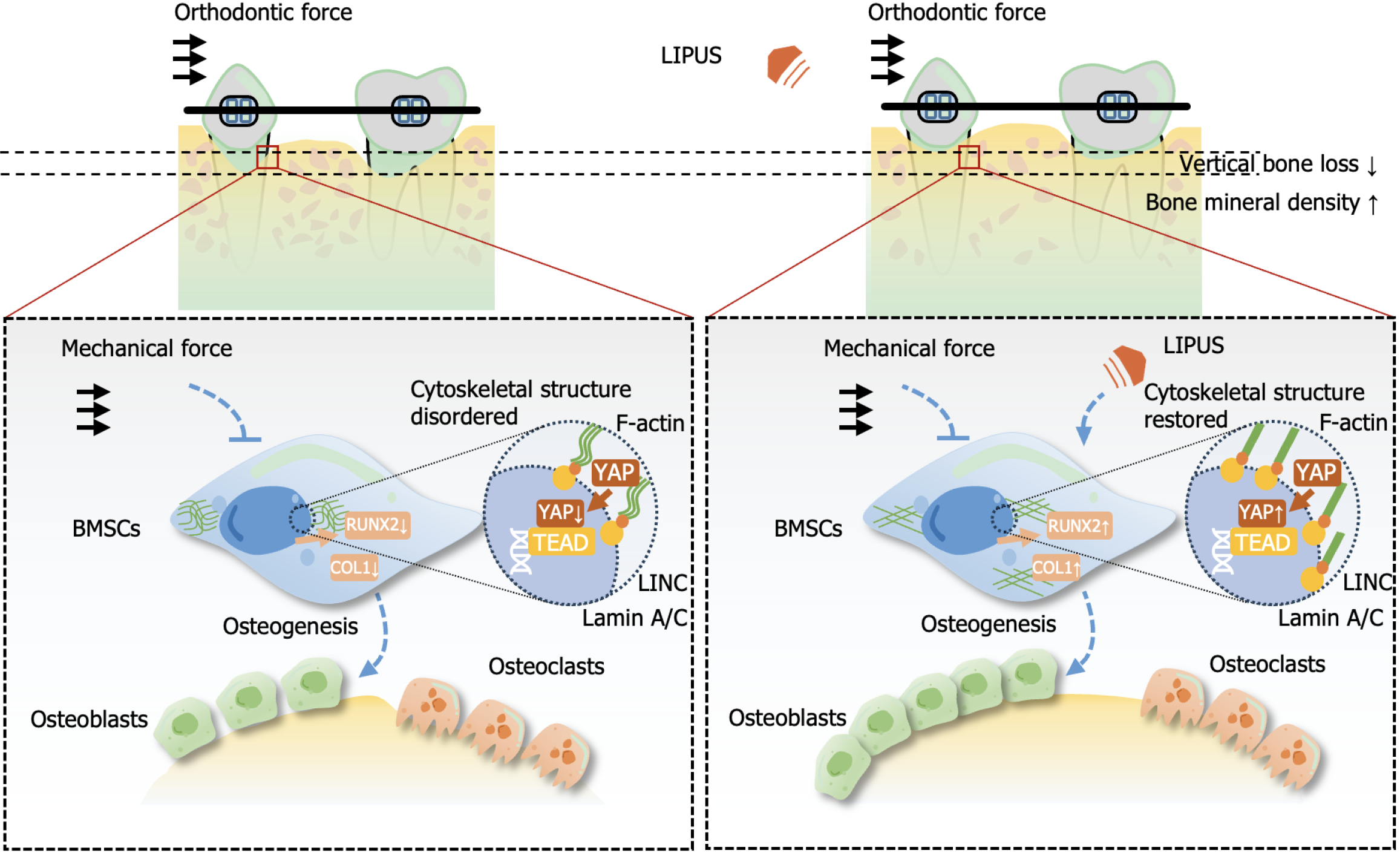Copyright
©The Author(s) 2024.
World J Stem Cells. Mar 26, 2024; 16(3): 267-286
Published online Mar 26, 2024. doi: 10.4252/wjsc.v16.i3.267
Published online Mar 26, 2024. doi: 10.4252/wjsc.v16.i3.267
Figure 8 Putative mechanism of the effect of low-intensity pulsed ultrasound on alveolar bone during orthodontic treatment.
Low-intensity pulsed ultrasound has little effect on osteoclast differentiation but may rescue osteogenic gene expression suppressed by static force and promote osteoblastic differentiation by reordering the cytoskeleton, upregulating the expression of F-actin and Lamin A/C, and increasing the nuclear translocation of Yes-associated protein 1, thereby contributing to alveolar bone homeostasis and morphology while accelerating tooth movement during orthodontic treatment. COL1: Type 1 collagen; LIPUS: Low-intensity pulsed ultrasound; RUNX2: Runt-related transcription factor 2; BMSC: Bone marrow mesenchymal stem cell; YAP1: Yes-associated protein.
- Citation: Wu T, Zheng F, Tang HY, Li HZ, Cui XY, Ding S, Liu D, Li CY, Jiang JH, Yang RL. Low-intensity pulsed ultrasound reduces alveolar bone resorption during orthodontic treatment via Lamin A/C-Yes-associated protein axis in stem cells. World J Stem Cells 2024; 16(3): 267-286
- URL: https://www.wjgnet.com/1948-0210/full/v16/i3/267.htm
- DOI: https://dx.doi.org/10.4252/wjsc.v16.i3.267









